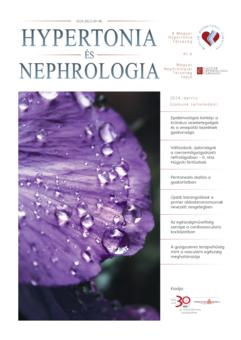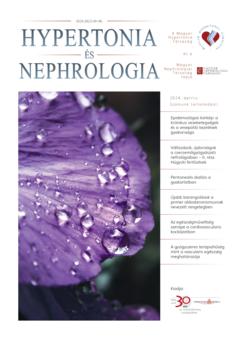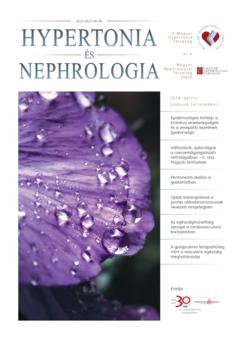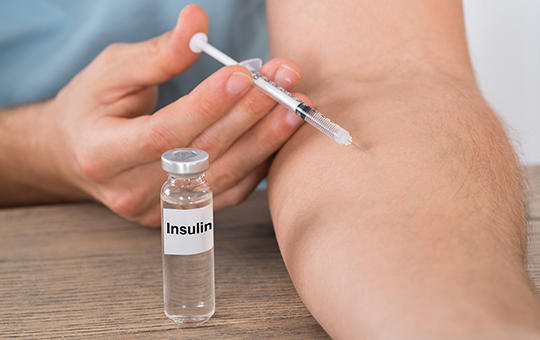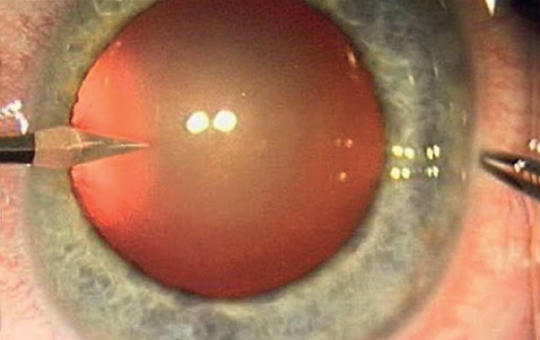The eLitMed.hu medical portal uses computer cookies for convenient operation. Detailed information can be found in the Cookie-policy.
Specialities
Cardiology
[Effect of rilmenidine therapy on heart rate- and blood pressure variability as well as baroreceptor sensitivity]
[The sympathetic nervous system plays an important and widely investigated role in the pathogenesis of the hypertension and its concomitant diseases.]
[Analysis of the antihypertensive effect of the antihypertensive rilmenidine]
[The most recent national (MHT 2018) and the latest European guidelines (ESH 2023) (1, 2), diuretics, the calcium antagonists, ACE inhibitors, ARBs, α1-adren- noceptor blockers and ß-blockers, the so-called "centrally acting" imidazoline (I)-1 receptor agonists were also mentioned.]
[More ramblings in the plethora called primary aldosteronism]
[The issue of primary (hyper)aldosteronism (PA) is fraught with many contradictions, attempts to identify it are important but undeservedly rare. The recently introduced histological method with practical benefits indicates a new aspect of the spectrum disease character and a revolutionary study has also been published regarding the functional (radionuclide) imaging of PA.]
[The misuse of insulin ]
[Discovered in 1922, insulin has saved millions of lives, and improved the quality of life of diabetic patients: it was and is the mainstay of antidiabetic treatment. Like many discoveries, however, it can also be used incorrectly, causing harm and even death. Attempted or terminated suicide as an important example of insulin misuse must be distinguished from accidental, deliberate or factitious insulin overdoses. With increasing prevalence of diabetes and spreading use of pharmaceutical insulin products, such cases are expected to rise. Regular, human and analogue insulins are used for this purpose. Famous killings by insulin were reported in both scientific and lay literature as reality cases, and achieved high rates of publicity. Insulin shock therapy used in psychiatry and post-vagotomy insulin tests can also have side effects or end up lethally. Insulin and insulin-like growth factor are also applied as drugs for doping. Investigations to prove insulin misuse benefit from the most advanced methods of clinical chemistry. ]
[Club of broken-hearted women: myth or reality? MINOCA Takotsubo syndrome – case study ]
[MINOCA (Myocardial Infarction with Non Obstructive Coronary Arteries) is a collective term used for several disease with different ethiology and pathophysology. Takotsubo syndrome or “broken heart disease” is a quite new entity, discovered by Dr. Hikaru Sato professor. The first case was documented in 1983, published in 1991 and since then, we have better understanding on patients with ACS without occlusions in coronary arteries. The name “takotsubo” comes from Japan, which describes the shape of the pot traditionnaly used for octopus fishing. The shape of the vessel is similar to the left ventricular “apical ballooning” sign, what we can observe during ventriculography in TTS.The pathophysiology is still not clearly understood, but as far as we know, it is a quite complicated neurohormonal cascade, triggered by emotional and physical stress or iatrogenic factors. In the following case we introduce a young, female patient with ACS, where coronarography was performed but no coronary occlusion was identified, but the ventriculography showed the previously introduced phenomenon and with a twist at the end of diagnostic examinations. ]
[Thrombolysis treatment and multi- disciplinary management of central retinal artery occlusion in comparison with traditional ophthalmological treatment options ]
[The management of central retinal artery occlusion (CRAO) has long been conservative therapy with limited efficacy carried out in ophthalmology departments together with etiological investigations lacking a standardised protocol. However, CRAO is analogous to ischemic central nervous system stroke and is associated with increased stroke risk, thus, systemic thrombolysis treatment and multidisciplinary management can be beneficial. Since May 2022, at Semmelweis University CRAO patients diagnosed within 4.5 hours are given intravenous thrombolysis therapy and undergo etiologic workup based on current stroke protocols. Here we report our experience with the multidisciplinary, protocol-based management of CRAO in comparison with former non-protocol based ophthalmological conservative treatment.
We reviewed CRAO patients’ data treated conservatively and with paracentesis within 6 hours at the Department of Ophthalmology between 2013 and 2022 including changes in visual acuity, neurological and cardiovascular findings compared to those in the thrombolysis project.
Of the 78 patients receiving non-protocol care, visual improvement was seen in 37% with natural course, 47% with conservative treatment and 47% with paracentesis. Four patients had significant carotid stenosis (2 underwent endarterectomy), 1 carotid dissection, 6 cardioembolism and 1 giant cell arteritis. Of the 4 patients within 4,5 hours, 3 gave their consent to the clinical trial and were treated with thrombolysis and underwent a full etiological assessment.
2 patients had improved visual acuity, 2 patients had significant carotid stenosis and underwent endarterectomy, 1 patient was started on anticoagulation for newly diagnosed atrial fibrillation.
CRAO patients presenting within 4,5 hours are rare and more patients are needed in our study to establish the efficacy of thrombolysis. However uniform protocollized evaluation helps identifying embolic sources thus, avoiding further and potentially more serious thromboembolic events.]
1.
Clinical Neuroscience
[Headache registry in Szeged: Experiences regarding to migraine patients]2.
Clinical Neuroscience
[The new target population of stroke awareness campaign: Kindergarten students ]3.
Clinical Neuroscience
Is there any difference in mortality rates of atrial fibrillation detected before or after ischemic stroke?4.
Clinical Neuroscience
Factors influencing the level of stigma in Parkinson’s disease in western Turkey5.
Clinical Neuroscience
[The effects of demographic and clinical factors on the severity of poststroke aphasia]1.
2.
Clinical Oncology
[Pancreatic cancer: ESMO Clinical Practice Guideline for diagnosis, treatment and follow-up]3.
Clinical Oncology
[Pharmacovigilance landscape – Lessons from the past and opportunities for future]4.
5.
